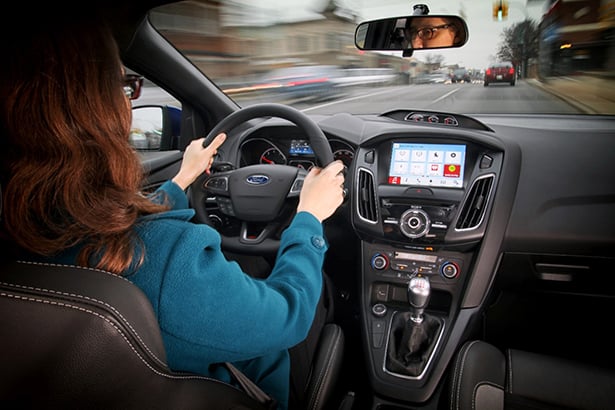Ford Gives Microsoft, MyFord Touch The Boot, Embraces BlackBerry QNX For Sync 3
Ford has been circling the drains in quality rankings by customers in recent years, mainly due to issues with its MyFord Touch in-car infotainment system. The touchscreen-based interface has drawn the ire of many drivers and automobile reviewers alike, and the auto manufacturer has done much of the past few years to address lingering performance and usability issues.
Drivers have experienced frequent system reboots, frozen screens, and poorly-responding haptic controls — not something that driver wants to experience while the vehicle is in motion. Ford has rolled out a slew of updates to address these shortcomings, and has even taken steps to bring back physical buttons and knobs on some models (F-Series, Mustang) to appease customers.
Ford was also badmouthed by publications like Consumer Reports and tanked in J.D. Power reliability rankings due to MyFord Touch.
It was reported back in February that Ford was looking to break off its partnership with Microsoft to provide the core operating system (Windows Embedded Automotive 7) for MyFord Touch in favor of BlackBerry’s QNX. The move made sense at the time considering that BlackBerry has over 50 percent market share with proprietary operating systems in automobiles, and counts Audi, BMW, Honda, General Motors, Land Rover, and Porsche as current customers.
Since the initial report in February, we’ve heard nothing from Ford, Microsoft, or BlackBerry; that is until today. Ford officially announced that it has selected BlackBerry’s QNX operating system to power Sync (Sync has traditionally been the lower-spec, better received counterpart to the more feature-filled MyFord Touch).
Unsurprisingly, Microsoft is also making a name change with regards to its infotainment solution. The MyFord Touch (and MyLincoln Touch) names are being dropped altogether, likely due to all the bad press and customer disdain for the product. Instead, all of Ford’s new infotainment systems will fall under the “Sync 3” umbrella.
Ford says that the switch to QNX will deliver better conversational speech recognition, an easier to use GUI, and touch screen controls that are more akin to using a smartphone. Performance has also been significantly improved thank to a 1.7GHz OMAP 5 processor which now powers the system.
“Sync 3 is another step forward in delivering connectivity features customers most want, and they tell us this kind of technology is an important part of their decision to buy our vehicles.”
Sync 3 has been optimized to take full advantage of voice commands, but larger buttons and different operating modes to enhance the display for daytime or nighttime operation aim to make the “touch” experience better for drivers that need to spend more time paying attention to the road rather then fighting with their vehicle’s touchscreen.
Ford has also simplified what’s visible on the screen, sectioning it off into three zones: Navigation, Audio and Phone. “Simplicity has value,” said Parrish Hanna, Ford global director of Human Machine Interface. “Reducing the number of things on-screen also makes control easier and is designed to limit the number of times a driver has to glance at the screen.

In addition, AppLink has been expanded to automatically identify compatible apps on your smartphone and display their “unique graphics and branding” on the display screen. In addition, there is built-in support for Siri Eyes-Free.
“Overall, AppLink is faster, more responsive and easier to find your apps,” said Julius Marchwicki, Ford global product manager, AppLink. “The overall design of SYNC 3 allows for better integration with smartphones – resulting in a more user-friendly experience.”
Sync 3 is set to debut next year, and will be installed on fifty percent of Ford/Lincoln vehicles by the end of 2016.



